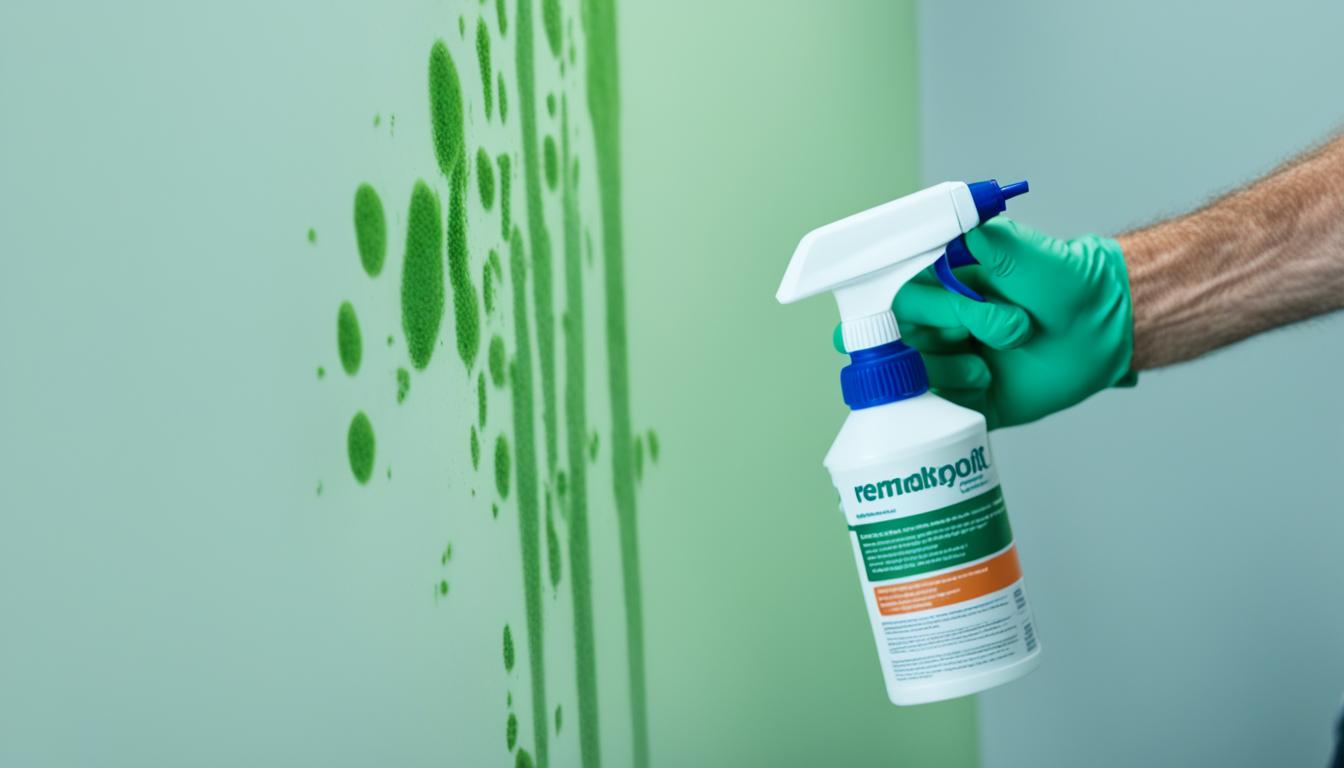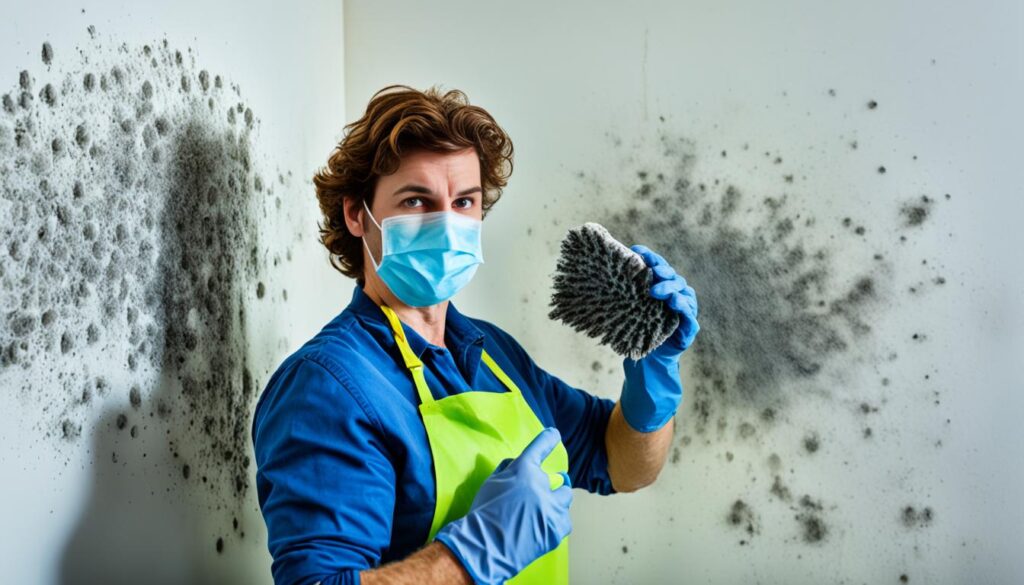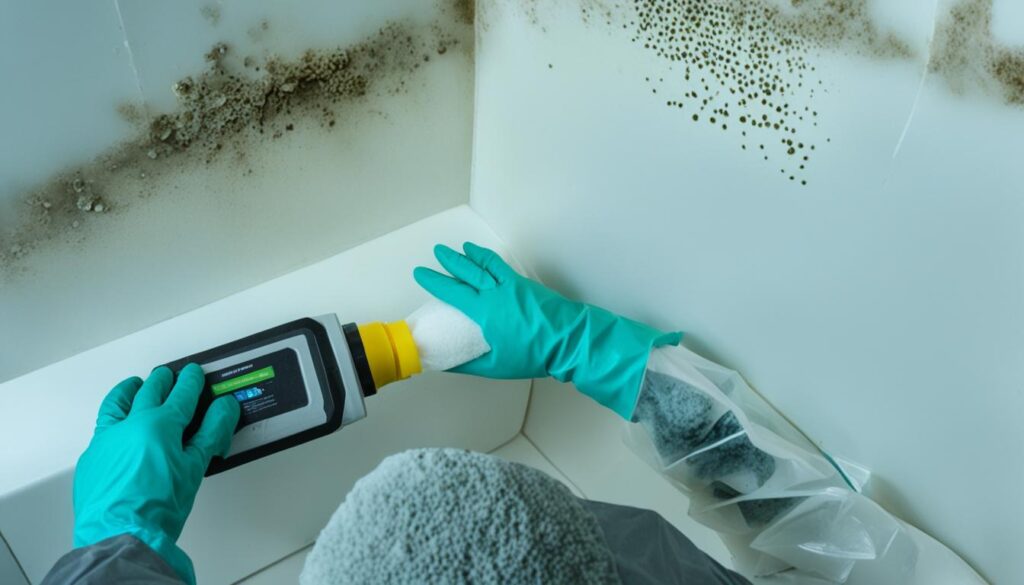
Remove Mold How-To: Effective Remediation Tips
Welcome to our comprehensive guide on removing mold from your home. Dealing with mold can be a daunting task, but with the right strategies and techniques, you can effectively tackle the issue and ensure proper remediation. In this section, we will explore key tips and methods for removing mold, whether you’re facing a small problem or a larger infestation.
Key Takeaways:
- Understanding the process of mold growth and the risks associated with it is crucial for effective mold removal.
- Proper ventilation, moisture control, and regular inspections play a vital role in preventing mold from reoccurring.
- When removing mold, it’s important to wear protective gear such as gloves and masks to ensure your safety.
- Different surfaces and areas of your home may require specific techniques for mold removal. It’s essential to follow the appropriate methods for each situation.
- If you’re dealing with a severe mold problem or are unsure about handling it on your own, it’s advisable to seek professional mold remediation services.
Understanding Mold Growth and Risks
Before diving into the mold removal process, it’s essential to understand how mold grows and the potential risks it poses. By gaining insight into these factors, you’ll be better equipped to implement effective mold remediation techniques and eliminate mold growth in your home.
The Common Areas Where Mold Thrives
Mold can grow in various areas of your home, especially in environments with excess moisture and poor ventilation. Some common areas where mold thrives include:
- Bathrooms: The combination of high humidity, damp conditions, and inadequate ventilation in bathrooms can create an optimal environment for mold growth.
- Kitchens: Moisture from cooking and cleaning, coupled with food particles or organic matter that can serve as a food source, can lead to mold growth in kitchen areas.
- Basements: These areas tend to be damp and poorly ventilated, making them susceptible to mold growth. Water leaks or flooding in basements can exacerbate mold problems.
- Attics: Insufficient ventilation in attics can lead to moisture buildup, creating ideal conditions for mold growth, especially in warmer climates.
The Health Hazards Associated with Mold Exposure
Exposure to mold can pose significant health risks, especially for individuals with allergies, asthma, or compromised immune systems. Some common health hazards associated with mold exposure include:
- Allergic reactions: Mold spores can trigger allergic reactions, resulting in symptoms such as sneezing, coughing, watery eyes, and skin irritation.
- Asthma attacks: Individuals with asthma may experience worsening symptoms, including wheezing, shortness of breath, and chest tightness, when exposed to mold.
- Respiratory infections: Prolonged exposure to mold can increase the risk of respiratory infections, such as bronchitis or pneumonia.
- Skin infections: Mold exposure can also lead to skin infections, particularly in individuals with weakened immune systems.
Understanding these health risks emphasizes the importance of prompt mold remediation to protect the well-being of you and your family.

DIY Mold Removal Tips and Techniques
Now that you have a good understanding of mold growth and its risks, it’s time to learn effective DIY mold removal tips and techniques. Mold can be a stubborn and persistent problem, but with the right strategies, you can successfully eliminate it from your home and prevent its recurrence.
Step-by-Step Mold Removal Process
- Identify the affected areas: Thoroughly inspect your home for visible signs of mold, such as discoloration, musty odors, or water stains. Focus on areas prone to moisture, such as bathrooms, basements, and kitchens.
- Gather the necessary supplies: Before you begin the mold removal process, make sure you have the following items:
| Protective Gear | Cleaning Solutions | Tools |
|---|---|---|
|
|
|
- Protect yourself and the surrounding area: Put on the necessary protective gear to prevent exposure to mold spores. Seal off the affected area with plastic sheeting to contain the mold and prevent it from spreading to other parts of your home.
- Remove mold from surfaces: Depending on the type of surface, use the appropriate cleaning solution to remove mold:
| Surface Type | Cleaning Solution |
|---|---|
| Non-porous surfaces (e.g., tiles, glass) | White vinegar or hydrogen peroxide |
| Porous surfaces (e.g., drywall, carpet) | Bleach solution (1 part bleach to 10 parts water) |
| Fabric or upholstery | Consult a professional cleaner |
Remember to always follow the manufacturer’s instructions when using cleaning solutions and wear gloves to protect your skin.
- Thoroughly dry the area: After cleaning, ensure the treated area is completely dry. Use fans or dehumidifiers to speed up the drying process and prevent mold from returning.
- Monitor for recurrence: Regularly inspect your home for any signs of mold regrowth. Address any moisture issues promptly and consider investing in a dehumidifier to maintain optimal humidity levels.
Preventing Mold Growth and Recurrence
Prevention is key to keeping your home mold-free. Here are some strategies to minimize the risk of mold growth:
- Maintain adequate ventilation: Ensure proper ventilation in high-moisture areas such as bathrooms, kitchens, and laundry rooms. Use exhaust fans or open windows to allow for air circulation and moisture removal.
- Control moisture levels: Fix any leaks or water seepage issues immediately. Regularly inspect pipes, roofs, and gutters for potential leaks. Use a dehumidifier in damp areas and keep indoor humidity levels below 60%.
- Properly insulate and seal: Insulate cold surfaces to prevent condensation, especially in areas prone to high humidity. Seal windows and doors properly to prevent moisture intrusion.
- Clean and dry water-damaged areas: If your home experiences water damage, such as from a leak or flooding, promptly clean and dry the affected areas within 24-48 hours to prevent mold growth.
- Regularly clean and maintain: Routinely clean and maintain your home, focusing on areas susceptible to moisture, such as bathrooms and kitchens. Regularly clean mold-prone surfaces, such as shower curtains and window sills, using appropriate cleaning solutions.

With these DIY mold removal tips and prevention strategies, you can effectively eliminate mold and maintain a mold-free home environment. However, if you’re dealing with a severe mold problem or have concerns about handling it on your own, it’s always best to seek professional mold remediation services for a thorough assessment and safe removal.
Conclusion
In conclusion, mold removal is a crucial step in maintaining a healthy home environment. Mold can pose serious health risks and cause damage to your property if left untreated. By following the tips and techniques outlined in this article, you can effectively remove mold and prevent it from coming back.
However, it’s important to note that dealing with severe mold problems can be challenging and potentially dangerous. If you’re uncertain about handling mold on your own, or if you’re facing a significant mold infestation, it’s best to seek professional mold remediation services.
If you’re located in the Miami area, we recommend contacting Fix Mold Miami. Their team of experienced professionals can provide a thorough mold assessment and offer effective solutions tailored to your specific needs. You can reach them at 305-465-6653, and they’ll be happy to assist you in ensuring a mold-free environment for your home.




